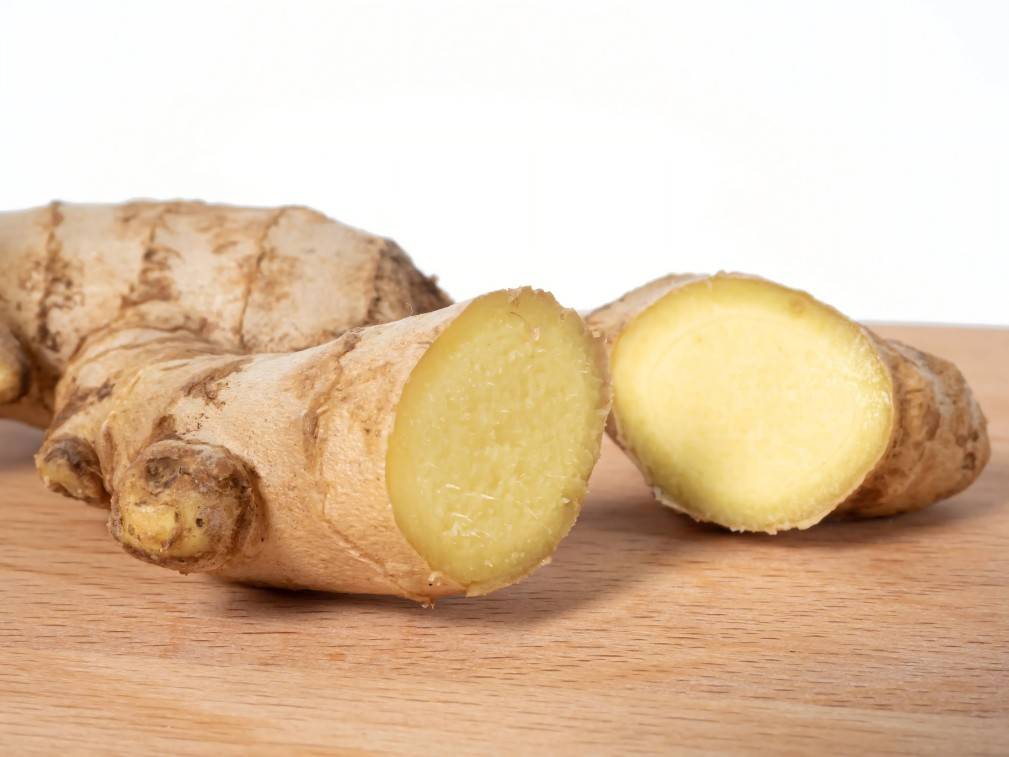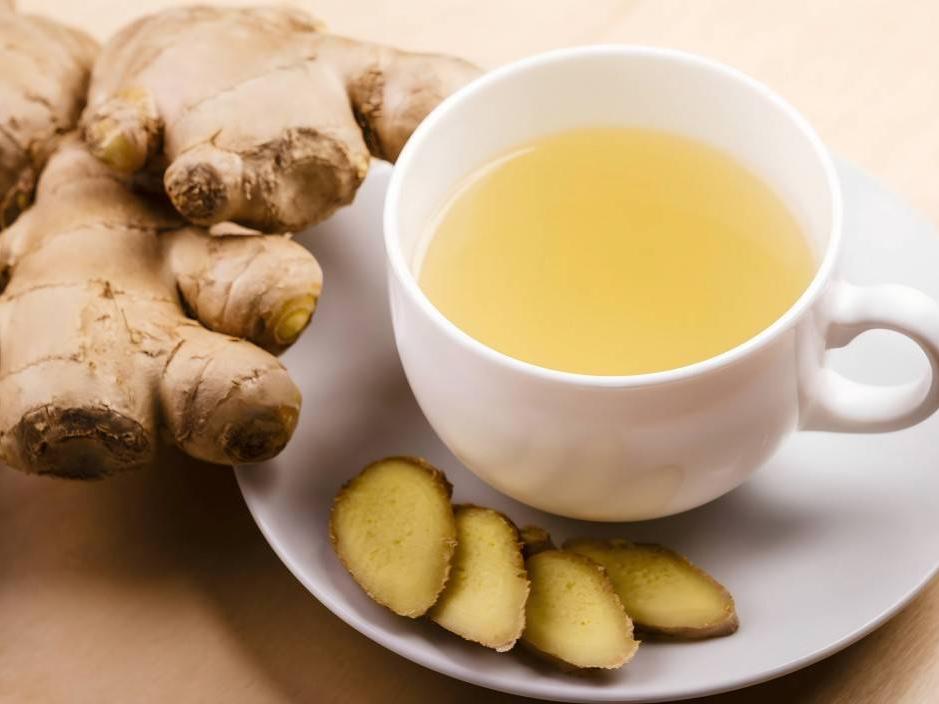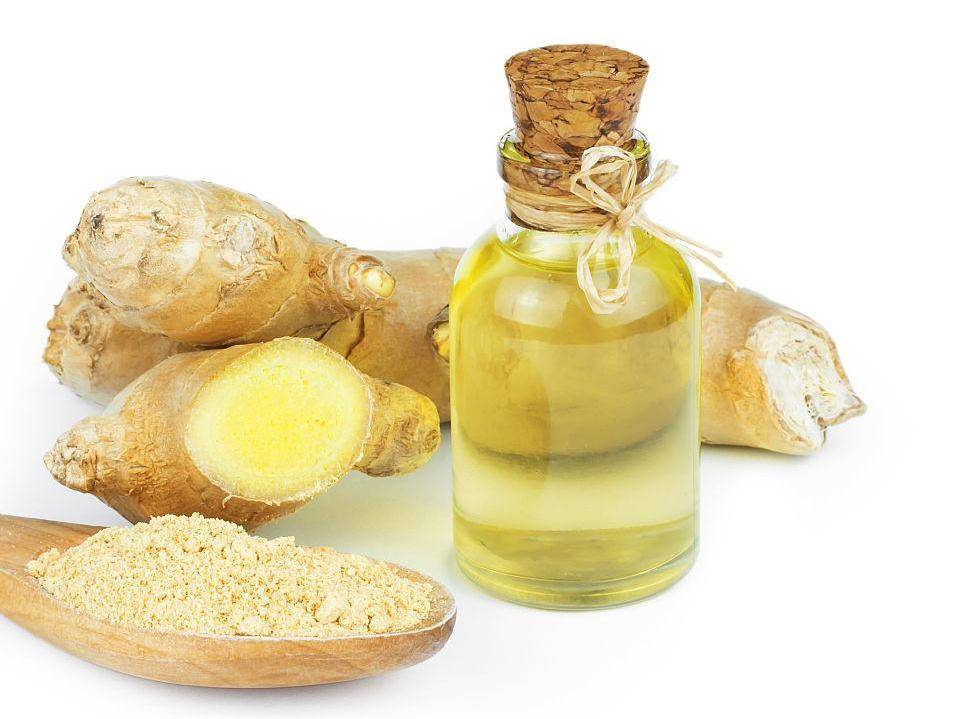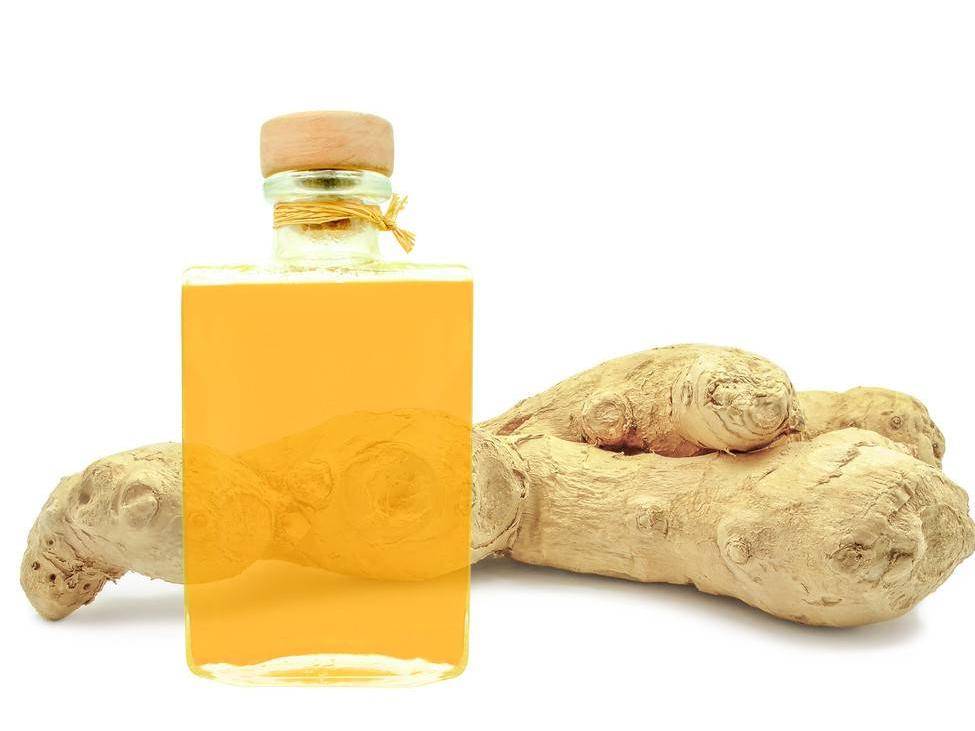What Is the the Use of Pomegranate Peel Extract Powder in Cosmetic?
Pomegranate (Punica granatum L.) is a deciduous shrub or tree, also known as danruo, tianpian, anshihuan, etc. [1], has a very wide range of cultivation in China, both edible and medicinal value. Pomegranate peel was first published in Lei Gong Gun Zhi Lun [2], refers to the fruit of the pomegranate after removing the edible part of the pulp, after drying and get the peel, is a Chinese medicine, mainly used to treat digestive diseases, with astringent dysentery effect.
Pomegranate peel, as a traditional Chinese medicine plant with a long history of application in China, has a high degree of safety. Research [3] found that pomegranate rind contains a wide variety of bioactive substances, including tannins, flavonoids, polysaccharides, alkaloids and organic acids, which have a variety of physiological and pharmacological activities, such as antioxidant, antibacterial, antimutagenic, anticancer, antiviral, antihypertensive, and cardiovascular disease prevention. Pomegranate peel can be used as a cosmetic raw material with anti-wrinkle, antiseptic, whitening and sunscreen effects. This article summarizes the main active ingredients contained in pomegranate peel, their pharmacological effects and their applications in cosmetics.
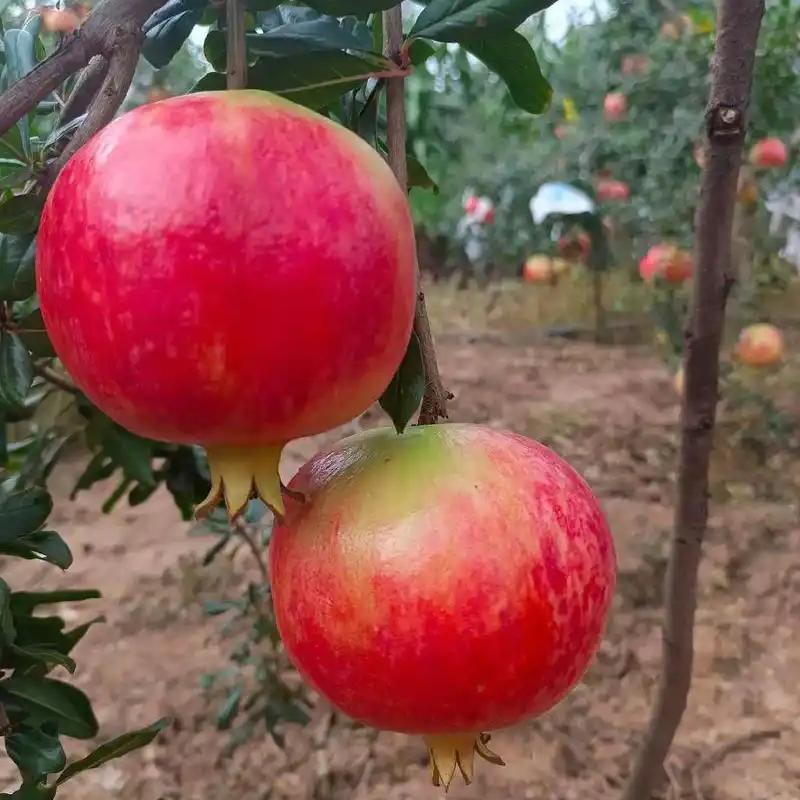
1 Pomegranate Peel Extract Active Ingredient
1. 1 Tannins
Ellagitannins, also known as tannins or ellagic acid, are a class of complex polyphenolic compounds that are widely distributed in the plant kingdom, and their structural types include hydrolysis and condensation [4]. The ellagitannins contained in pomegranate peel mainly include andrographidine, andrographidine, ellagic acid and gallic acid, etc. [5], and the chemical structure of the main monomers in the ellagitannins of pomegranate peel is characterized in Figure 1. Studies [6] have shown that pomegranate peel ellagitannins can scavenge excessive free radicals in organisms, maintain the flow of cell membranes and protein conformation, prevent radiation-induced DNA breaks, and have antioxidant, antibacterial and antitumor effects. Literature research has revealed that pomegranate peel tannins have the advantages of a wide spectrum of bacterial inhibition and strong bacterial inhibitory activity, and their inhibitory ability against different bacterial activities varies, as shown in Table 1.
The most typical monomer in pomegranate peel ellagic acid is ellagic acid, which is a natural plant polyphenol that can exist in free or condensed form [10].
It is a natural plant polyphenol that can exist in free or condensed form [ 10 ].
Secondary metabolites such as gallic acid and andrographolide in pomegranate peel can be metabolized to ellagic acid. Ellagic acid has a strong inhibitory effect on tyrosinase [ 11 ], which can reduce skin pigmentation after UV radiation. In the study of Fan Gaofu et al [ 12 ], ellagic acid was found to have an inhibitory effect on Escherichia coli and Staphylococcus aureus. In a study by Lu Jingjing et al [ 13 ], ellagic acid can exert antioxidant effects by scavenging oxygen and hydroxyl radicals and chelating with metal ions.
Ellagitannin is a very important and unique bioactive substance in pomegranate peel. It is a hydrolyzable ellagitannin with a large relative molecular mass containing several hydroxyl groups, which is easily soluble in water and soluble in ethanol [14], with a pair of isomers that can be converted to each other. The research of Liu Di et al [ 15 ] found that andrographolide has good antioxidant ability, and it has scavenging effect on hydroxyl radicals and DPPH radicals. Xu Ping et al [ 16 ] found that andrographolide could relieve nerve pain and improve cognitive function, and may exert antidepressant effects by inhibiting the hyperactivity of the hypothalamic-pituitary-adrenal axis (HPA axis) and promoting the secretion of monoamine transmitters in the brain to avoid damaging the hippocampal neurons. In the study of Niu Ruohui et al [ 17 ], it was found that andrographolide could inhibit the activity of fatty acid synthase to prevent obesity. In the study of Huang Shu Yun et al [ 18 ], it was found that pomegranoside could significantly affect the permeability of the cell membrane and the integrity of the cell wall of Staphylococcus aureus, and also showed some inhibitory effects on bacterial proteins. In addition, pomegranoside has been widely used in the prevention of cardiovascular diseases, diabetes and various tumors.
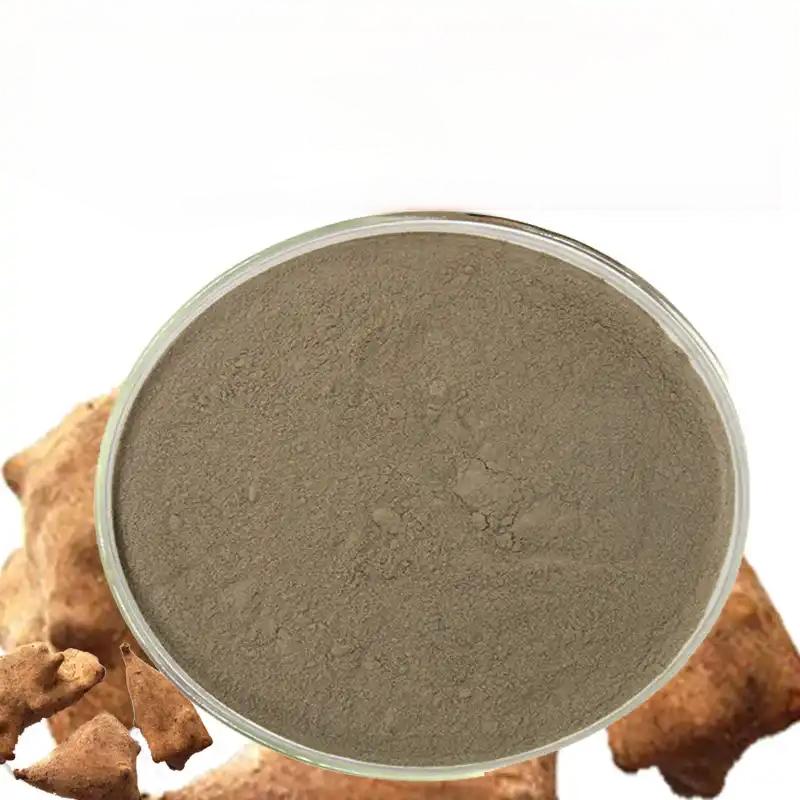
In addition to andrographolide and ellagic acid, pomegranate peel contains a variety of ellagitannins such as chlorogenic acid, andrographolide and gallic acid. In the study of Li Guanghui et al. [19], it was found that chlorogenic acid and andrographolide can synergistically damage cell membranes and exert an inhibitory effect on Staphylococcus aureus. According to the study of Chen Peng et al [ 20 ], andrographolide has the ability to scavenge both DPPH and hydroxyl radicals, and its total antioxidant capacity is lower than that of andrographolide. Gallic acid is a hydrolyzable tannin with good antioxidant capacity, preventive and inhibitory effects on various stages of tumor formation, and also protects the stomach [21].
1.2 Flavonoids
Flavonoids are secondary metabolites in plants, generally found in plant fruits, stems, leaves, roots and other parts of the plant, most of which are combined with sugar to form glycosides, and a few exist in the form of free glycosides [22]. Pomegranate peel has obvious antioxidant activity and free radical scavenging ability, which is closely related to its rich flavonoids. The flavonoids contained in pomegranate rind can exert antioxidant effects by quenching reactive oxygen species, inhibiting oxidative enzymes, eliminating various reactive oxygen species and oxygen radicals as hydrogen donors, and complexing metal ions with catalytic effects [23]. Studies [24] have shown that the flavonoid compounds contained in pomegranate peel have obvious inhibitory effects on Staphylococcus aureus, Salmonella and Escherichia coli, and their antibacterial mechanism may be to inhibit the growth of microorganisms by altering the structure of the cell wall and the permeability of the cell membrane, so that a large number of reactive oxygen species (ROS) are generated in the cell.
In the study of Meng Xintao et al. [ 25 ], it was found that the flavonoids contained in pomegranate rind mainly include rutin, quercetin, quercetin, kaempferol, and isorhamnetin, and the specific chemical structure is shown in Figure 2. Rutin, also known as rutin, is a natural antioxidant that can scavenge free radicals [26], and has a variety of effects such as anti-inflammatory and liver health. Quercetin is a polyhydroxy-substituted flavonol compound with multiple redox centers, which has various biological activities such as antioxidant, antitumor [27], anti-inflammatory and antibacterial. Quercetin has a high safety profile and has potential for use in the treatment of inflammatory bowel disease. Kaempferol, which usually exists in the form of various glycosides, has good antioxidant capacity and has an obvious inhibitory effect on the proliferation of melanoma B16 cells [28]. Isorhamnetin, a direct metabolite of quercetin, can scavenge cellular damage caused by oxygen free radicals in vivo and protect human epidermal melanocytes from H2O2-induced oxidative stress [29].
1.3 Polysaccharides
Polysaccharides are natural macromolecular compounds containing aldehyde or ketone groups formed by linking more than 10 monosaccharides through glycosidic bonds, and they are widely found in the body of plants and animals as well as in the cell walls of microorganisms [30], and they have a great influence on the growth and development of living organisms. Pomegranate peel polysaccharides are mainly composed of pectin, fucose, galacturonic acid, arabinose, and small amounts of mannose, rhamnose, glucuronic acid, glucose, xylose, and galactose, and it has been shown that pomegranate peel polysaccharides have the effects of antioxidant, antitumor, and immunomodulation, and they also have a better inhibitory effect on cholesterol esterase and pancreatic lipase. According to the research of Chen Haiming et al [ 32 ], pomegranate peel polysaccharides can inhibit inflammatory cytokines through inhibiting NF-κB and STAT3 signaling pathway to improve the symptoms of psoriasis, and can improve the protective barrier of the skin by enhancing AQP3 (aquaporin 3) and FLG (filamentous polyprotein).
Pectin is a kind of acidic heteropolysaccharide with complex structure mainly composed of galacturonic acid, which widely exists in the cell wall and cytosol of roots, stems, and leaves of fruits and vegetables [33], and pectin is mainly produced from citrus peels, lemon peel residue, and apple peel residue in China. Pomegranate peel is rich in pectin, and the production of pectin with it can better utilize the resources of pomegranate peel to reduce the waste of resources. Pectin has good gelling, thickening, emulsifying and stabilizing effects, and can be used as a gelling agent, stabilizer and thickener in food, medicine, health care products and cosmetics. The study of Meng Fanlei et al [ 34 ] found that pomegranate peel pectin has a certain scavenging effect on DPPH free radicals, indicating that it has a certain in vitro antioxidant activity. It has been shown [35] that pectin also has anti-diarrhea, anti-cancer, blood pressure, cholesterol and treatment of diabetes and other effects.
In addition to pectin, pomegranate peel also contains a variety of polysaccharide components, through the study of Tian Xiao et al [ 36 ] found that fucose has anti-inflammatory, anti-cancer, provide carbon source for intestinal microorganisms and maintain the balance of intestinal flora and other functions. Through the research of Chen Yingyi et al [ 37 ], it was found that mannose can improve the symptoms of urinary tract infection, inhibit the growth of tumor, enhance the effect of chemotherapy and immunity regulation, etc., which has a very good application prospect.
1.4 Others
In addition to tannins, flavonoids and polysaccharides, pomegranate peel is also rich in minerals, alkaloids, amino acids and organic acids. The minerals contained in pomegranate peel mainly include potassium, nitrogen, calcium, magnesium and phosphorus. Pomegranate rind is rich in alkaloids, including pyrrolipiperidines and piperidines such as garnetine, isogarnetine and N-methylisogarnetine [38]. Alkaloids are a kind of natural nitrogenous compounds widely existed in plants, and the research of Wang Hong et al [ 39 ] found that they have good antiviral activity, and can play antiviral roles by inhibiting the adsorption and entry of viruses, and promoting apoptosis and autophagy of cells. The rat test showed that pomegranate rind is slightly toxic, and the alkaloids contained in pomegranate rind can cause locomotor disorders and respiratory paralysis in test animals [40].
It has been shown in a study [41] that alkaloid-containing plants may trigger photosensitization, and alkaloids are promising for use as plant photosensitizing toxins in pesticides. Pomegranate peel also contains terpenoids, amino acids, vitamin C and organic acids, as shown in Table 2. Terpenoids in pomegranate peel mainly include ursolic acid and oleanolic acid, and it has been shown in a study [42] that oleanolic acid has a good immunomodulatory effect. Pomegranate peel is rich in amino acids, with the highest content of glutamic acid, which can participate in protein synthesis and has a certain role in promoting the development of the intestinal tract [43]. Vitamin C is one of the essential vitamins and a natural antioxidant, which can whiten the skin by inhibiting the activity of tyrosinase. The organic acid contained in pomegranate peel is mainly ursolic acid, which is widely used in cosmetics with whitening effect, and it has anti-tumor, anti-oxidation, anti-inflammatory and antibacterial effects.
2 The efficacy of pomegranate peel in cosmetics
Through researching the literature on the application of pomegranate peel in cosmetics in the five-year period of 2017-2021, it is found that pomegranate peel has been applied more in cosmetics with the effects of anti-wrinkle, antiseptic, whitening and sunscreen, as shown in Figure 3.
2.1 Application of pomegranate peel extract in cosmetics with anti-wrinkle effect
The causes of skin aging can be divided into natural aging and photoaging [44], and skin cell metabolism imbalance produces excessive free radicals, mitochondrial DNA damage and excessive production of ROS caused by UV irradiation all lead to skin aging [45].
Pomegranate peel has good antioxidant activity and is widely used in cosmetics with anti-wrinkle effect. The antioxidant activity of pomegranate peel is mainly attributed to its high content of phenolic acids, flavonoids and polysaccharides. In vitro cellular experiments have shown that the phenolic substances contained in pomegranate peel are protective against H2O2-induced oxidative stress and cytotoxicity in human keratinocytes (HaCaT cells). Compared with the treatment group using H2O2-induced HaCaT cells, pomegranate peel extract at 12.5, 25, and 50 μg/mL reduced the production of H2O2-induced ROS by 1.36, 1.06, and 1.03-fold, respectively, in HaCaT cells. Compared with the H2O2-treated group, pomegranate peel extracts at 25 and 50 μg/mL significantly reduced H2O2-induced cytotoxicity and increased the viability of HaCaT cells by 85.6% and 89.9%, respectively [46]. Ellagic acid contained in pomegranate peel can play an antioxidant role by chelating with metal ions and reacting with free radicals.
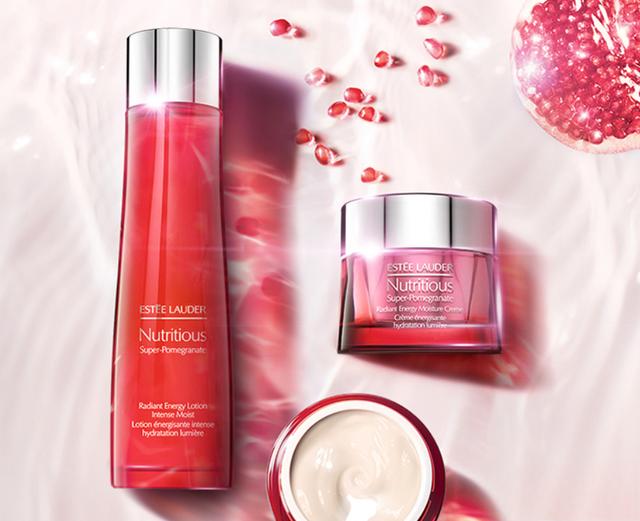
Xing Xiaoping et al [ 47 ] used vitamin C as a positive control and found that the scavenging rate of hydroxyl radicals could reach 92.26% when the mass concentration of ellagic acid was 0.14 g/L, and the inhibition rate of elastase could reach 88.26% when the mass concentration of ellagic acid was 4.57 g/L, indicating that ellagic acid can be applied to pomegranate peel as a natural scavenger and inhibitor of elastase, and can be used in the treatment of pomegranate peel as a natural scavenger and inhibitor of elastase. This indicates that ellagic acid can be used as a natural free radical scavenger and elastase inhibitor in cosmetics with anti-wrinkle effect. It has been shown that pectin contained in pomegranate rind can support the internal cells and has good antioxidant activity, which is widely used in the cosmetic industry.
2.2 Application of pomegranate peel extract in cosmetics with antiseptic effects
The raw materials and additives in cosmetics contain a lot of water and nutrients, and in the process of people's use, microorganisms will reproduce in cosmetics in large quantities, which will be harmful to human health. Adding preservatives to cosmetics can reduce the contamination of cosmetics, inhibit the growth of microorganisms and prolong the period of their use. The preservatives commonly used in cosmetics, such as nipagin esters, endosulfan urea imidazolidinyl urea, isothiazolinone benzoic acid and so on, have some negative effects on the human body. With the pursuit of natural, safe and reliable cosmetics, the application of natural preservatives with antibacterial effect extracted from plants in cosmetics has received more and more attention in recent years.
The application of plant-derived preservatives in cosmetics has a very good prospect, and many domestic and foreign researchers are extracting substances with antibacterial effects from different plants and trying to develop them into preservatives to meet the needs of consumers. In vitro bacteriostatic experiments found that the ellagitannins and flavonoids contained in pomegranate peel have good bacteriostatic effects, and ellagitannins have better bacteriostatic effects. The study of Song Changqing et al. [49] found that the ellagitannins of pomegranate peel can inhibit the synthesis of bacterial proteins and affect the structure of the bacterial cell wall and cell membrane in order to play an inhibitory role. Andrographidine is the most important ellagitannin compound in pomegranate peel that exerts antifungal effects [50], and it was found by Endo et al. [51] that andrographidine showed strong inhibitory effects on Candida albicans and Candida smoothii, with the minimum inhibitory concentrations of 3.9 and 1.9 μg/mL, respectively.
In a study by Wei Lu et al. [ 52 ], it was found that quercetin, kaempferol and other flavonoids contained in pomegranate rind could inhibit the growth of Propionibacterium acnes and Staphylococcus aureus, antiproliferative activity of keratinocytes, reduction of lipase activity and anti-inflammatory activity, which could be useful in the treatment of acne. Pomegranate peel, as a traditional Chinese herbal medicine containing a variety of biologically active substances, can not only meet the concept of green and environmental protection, but also reduce the harm of traditional preservatives to the skin if the active ingredients with antibacterial and antiseptic effects in pomegranate peel are extracted and applied to cosmetics as natural antiseptic ingredients. At present, the data on the application of pomegranate peel as a natural preservative ingredient instead of traditional preservatives in cosmetics are not comprehensive enough, and the practical application value of pomegranate peel as a preservative in cosmetics needs to be further studied.
2.3 Application of pomegranate peel extract in cosmetics with whitening effect
The content and distribution of melanin is an important factor affecting the color of human skin, and its synthesis process is very complicated and delicate, so most of the whitening agents nowadays work by inhibiting the formation of melanin. In the process of melanin synthesis, tyrosinase plays a very important role, and by inhibiting the activity of tyrosinase, the reaction chain of melanin synthesis can be blocked to achieve the purpose of whitening.
Through the research of Gu Yanpei et al [ 53 ], it is found that pomegranate peel extract can reduce the hyperpigmentation caused by ultraviolet irradiation by affecting the proliferation of melanocytes, inhibiting the activity of tyrosinase and inhibiting the transfer of melanocytes and other pathways. It has been shown [54] that the inhibitory activity of pomegranate peel extract on tyrosinase was determined by colorimetric method with arbutin as positive control, and it was found that the extract of the peel dried at 50 ℃ had a better inhibitory effect on the activity of tyrosinase. Pomegranate peel is rich in ellagic acid, which can inhibit tyrosinase activity by chelating copper atoms in the active site of the enzyme itself.
It has been shown [55] that when ellagic acid was applied to the surface of the skin of brown guinea pigs with melanocytes in the skin for 6 weeks, and at the same time UV irradiation was utilized for 2 weeks, the pigmentation of the skin was significantly inhibited, and the skin that had received the ellagic acid showed similar characteristics to the skin that had not been irradiated with ultraviolet light. Ellagic acid-exposed skin showed similar characteristics to skin that had not been irradiated with UV light. Most of the botanical extracts for tyrosinase inhibition have been identified on the basis of inhibition of mushroom tyrosinase activity, and in a study by Yoshimura et al. [56] it was found that pomegranate peel extracts containing 90% ellagic acid had an inhibitory effect on mushroom tyrosinase activity comparable to that of arbutin. According to the study of Ren Qianqian et al [ 57 ], pomegranate rind contains abundant andrographolide, which can inhibit melanin synthesis in B16F10 melanoma cells by decreasing the expression of MITF protein through the EPK/Akt signaling pathway, suggesting that pomegranate rind extracts can regulate the process of melanin formation at the molecular level.
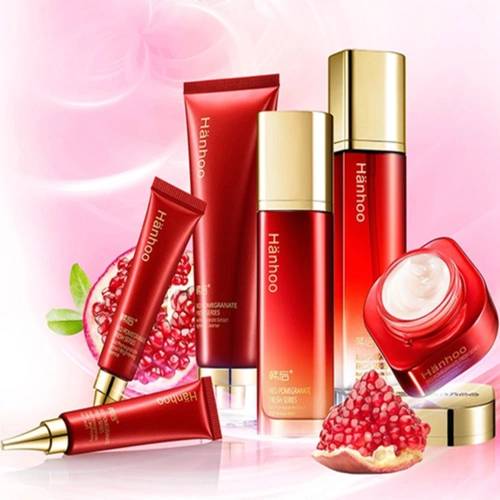
2.4 Application of pomegranate peel extract in cosmetics with sunscreen effect
When the human body is exposed to excessive UV radiation for a long period of time, skin tanning, inflammation, oxidative stress damage, and photocarcinogenesis occur, and the use of cosmetic products with a sunscreen effect on the skin is indispensable. The sunscreens commonly used in cosmetics include chemical sunscreens and physical sunscreens, but the former may irritate the skin and the latter may not feel good on the skin. The utilization of active ingredients in plant extracts with the ability to protect the skin from UV rays is a hot topic in current research.
Ultraviolet absorption is the most important mechanism for plant extracts to exert photoprotective effects, and it has been shown that the polyphenols and flavonoids contained in pomegranate rind exhibit good ultraviolet absorption because of their benzene ring or conjugated structure, and can be used as a kind of natural sunscreen agent in cosmetics. Gou Junli et al. [59] found that polyphenols contained in pomegranate peel are one of the main components of UV absorbers, and its combination with flavonoids in licorice can effectively resist UVB and UVA ultraviolet rays. Currently, there are few studies on the use of pomegranate peel extract as a sunscreen agent added to cosmetics with sunscreen effect, and its practical application value and safety as a sunscreen agent in cosmetics need to be further investigated.
3 Conclusion
Pomegranate is widely cultivated in China, and its fruit processing by-product, pomegranate peel, is rich in tannins, flavonoids, polysaccharides and other biologically active substances, which can be applied to cosmetics with anti-wrinkle, antiseptic, whitening, sunscreen and other effects, and as a long history of application of traditional Chinese medicine, it is safe, but this does not mean that pomegranate peel is not toxic, and the peel contains alkaloids, alkaloids, alkaloid, and other toxicity agents. However, this does not mean that pomegranate peel is free from toxicity.
Pomegranate peel contains alkaloids, which can lead to locomotor disorders and respiratory paralysis in test animals, as well as triggering photosensitization, so it is necessary to carry out a comprehensive safety evaluation of pomegranate peel extracts for cosmetic applications. Except for a few pomegranate peels which are used as herbal medicines, most of the pomegranate peels are discarded or incinerated, causing great environmental pollution and waste of resources. Therefore, future research on the use of pomegranate peel as a raw material for herbal cosmetic products could start from the following aspects: 1) further enhancement of the utilization of pomegranate peel; 2) deeper and wider research on the bioactive substances contained in pomegranate peel and their mechanisms of action; and 3) the application of pomegranate peel extracts in cosmetic products for other effects, except for wrinkle prevention, antiseptic, whitening, and sun protection.
Reference:
[ 1 ]Guo Hairu, Zhu Fangjuan, Li Longgen, et al. Study on chemical constituents of pomegranate peel[J]. Journal of Yunnan Agricultural University(Natural Science), 2019, 34(2): 362-369.
[ 2 ]Zhou Qian, Sun Lili, Dai Yanpeng, et al. Comparative study on chemical constituents of pomegranate peel, pomegranate pulp and pomegranate seed[J]. Chinese Journal of Traditional Chinese Medicine, 2013, 38(13): 2159-2162.
[ 3 ]Xie Li, Tian Li. Research progress of antitumor active components of pomegranate[J]. Chinese Journal of Experimental Formulary, 2016, 22(2): 211-215.
[ 4 ]Zhu Xuanxuan, Bai Lu, Liu Xiaoqian, et al. Research progress of traditional Chinese medicine tannins in recent ten years[J]. Chinese Journal of Traditional Chinese Medicine, 2021, 46(24): 6353-6365.
[ 5 ]Liu Yanze, Li Haixia. Tannins and polyphenols from pomegranate peel[J]. Chinese Herbal Medicine, 2007, 38(4): 502-504.
[ 6 ]Liu Chang,Jin Zhexiong. Research progress of pharmacological activity of tannins[J]. Heilongjiang Medicine, 2015, 28(1): 14-17.
[ 7 ]Ismail T, Akhtar S, Sestili P, et al. Antioxidant, antimicrobial and urease inhibitory activities of phenolics-rich pomegranate peel hydro- alcoholic extracts[J]. Journal of Food Biochemistry, 2016(40): 550-558.
[ 8 ]Panichayupakaranant P, Tewtrakul S, Yuenyongsawad S. Antibacterial, anti-inflammatory and anti-allergic activities of standardised pomegranate rind extract[J]. Food Chemistry, 2010, 123(2): 400-403.
[ 9 ]Zhou Mengyu, Zhou Benhong, Guo Xianxi. Research progress of pomegranate peel tannin as natural bacteriostatic agent[J]. Chinese Pharm, 2018, 21(11): 2037-2040, 2044.
[10] Feng Lijuan, Tao Jihan, Yin Yanlei, et al. Research progress of pomegranate functional substance ellagic acid[J]. Food Science, 2014(23): 6.
[11] Wang Jialuan, Zhao Fengyi, Zhang Chunhong, et al. Research progress on extraction, purification and biological activity of ellagic acid[J]. Science and Technology of Food Industry, 2022, 43(13): 416-424.
[12] Fan Gaofu, Xu Zhenguo, Dai Ruomeng, et al. Study on antibacterial mechanism of pomegranate peel based on network pharmacology[J]. Modern Applied Pharmacy in China, 2022, 39(1): 48-54.
[13] Lu Jingjing, Ding Ke, Yang Dajin. Research progress of functional factor ellagic acid in health products[J]. Food Science, 2010,31(21): 451-454.
[14] Chang Zhanying, Liu Guihua, Gulibaheer·kawuli, et al. Optimization of extraction technology and antioxidant activity of punicalagin from pomegranate peel by response surface methodology[J]. Food Research and Development, 2020, 41(22): 100-107.
[15] Liu Di, Li Jing, Song Xiaoyu, et al. Study on extraction technology and antioxidant activity of punicalagin from pomegranate peel[J]. Food Research and Development, 2017, 38(1): 14-18.
[16] Xu Ping, Huang Shuyun, Guo Hongmin, et al. Network pharmacology study and experimental validation of punicalagin in the treatment of depression[J]. Chinese Pharmacological Bulletin, 2022, 38(5): 755-760.
[17] Niu Ruohui, Chang Zhanying, Rena·jiensi, et al. Study on the stability of punicalagin extract from pomegranate peel[J]. China Food Additives, 2022, 33(6): 95-101.
[18] Huang Shuyun, Xu Ping, Hong Zongyuan, et al. Experimental study on the improvement of bacterial enteritis and the regulation of intestinal flora by punicalagin[J]. Chinese Medicinal Herb, 2022, 53(10): 3044-3052.
[19] Li Guanghui, Guo Weiyun, Gao Xueli, et al. Synergistic inhibitory effect and mechanism of punicalagin and chlorogenic acid on Staphylococcus aureus[J]. Science and Technology of Food Industry, 2018, 39(10): 17-21.
[20] Chen Peng, Zhou Benhong. Research progress of pomegranate peel polyphenols—punicalin[J]. Chinese Pharm, 2017, 20(4): 720-724.
[21] Feng Lijuan, Yin Yanlei, Zhao Xueqing, et al. Research progress of gallic acid metabolism and healthcare function of pomegranate[J]. Journal of Fruit Science, 2014, 31(4): 710-716.
[22] Wang Meng, Wang Zichun, Huang Jingmei, et al. Research progress on extraction, purification and functional activity of flavonoida from sea-buckthorn[J]. Science and Technology of Food Industry, 2023, 44(2): 487-496.
[23] Kuerbanjiang·balati, Zhao Jing, Zhang Xiaoying. Study on extraction techbology of total flavonoids from pomegranate peel and its antioxidant activity in vitro[J]. Food Research and Development, 2016, 37(15): 89-95.
[24] Yang Lin, Zhou Benhong. Experimental study on the bacteriostasis of tannins and flavonoids in pomegranate peel[J]. Lishizhen Med Mater Med Res, 2007(10): 2335-2336.
[25] Meng Xintao, Wei Jian, Xu Mingqiang, et al. Determination of five flavonoids in pomegranate peel by HPLC[J]. Xinjiang Agricultural Sciences, 2019, 56(9): 1659-1667.
[26] Feng Shuang, Ma Xiao, Feng Liya, et al. Therapeutic potential of natural compound rutin[J]. Chemical Bulletin, 2021, 84(12): 1338-1344.
[27] Feng Liya, Li Hao, Liu Juan, et al. Research progress of quercetin [J]. Chinese Journal of Traditional Chinese Medicine, 2021, 46(20): 5185-5193.
[28] Di Qiang, Cao Ci, Liu Wenbei, et al. Inhibitory effect of kaempferol on mouse melanoma cell line B16 in vivo and in vitro[J]. Adv Dermatol Allergol, 2021, 6(3): 498-504.
[29] Wang Hongjuan, Hu Wen, Lei Zixian, et al. Isorhamnetin inhibited the increase of ROS level and the decrease of cell activity in black cells induced by H2O2[J]. Chinese Journal of Histochemistry and Cytochemistry, 2021, 30(3): 240-245.
[30] Li Yun, Zhu Caiping, Zhang Yang, et al. Optimization of microwave- assisted extraction of pomegranate peel polysaccharide and its immunomodulatory effect[J]. Research and Development of Natural Products, 2018, 30(6): 1015-1020, 1077.
[31]Ji Huijie, Zhu Caiping. Study on the extraction and composition of pomegranate peel polysaccharide and its lipid-lowering activity in vitro [J]. Food and Fermentation Industries, 2023, 49(4): 161-168.
[32] Chen Haiming, Wang Cheng, Tang Bin, et al. P. granatum peel polysaccharides ameliorate imiquimod-induced psoriasis-like dermatitis in mice via suppression of NF-κB and STAT3 pathways [J]. Front Pharmacol, 2022(12): 806844.
[33] Chen Nina. Study on microwave assisted extraction of pomegranate peel pectin[J]. Agricultural Product Processing, 2022(9): 51-54.
[34] Meng Fanlei, Chu Zhihui, Zhu Fengling, et al. Properties and antioxidant activity of modified pomegranate peel pectin[J]. Food Technology, 2020, 45(1): 326-329, 337.
[35] Du Chao, Liu Jiaci, Cao Manyu, et al. Optimization of the extraction process of Ganzhou navel orange peel pectin and its physicochemical properties and biological activities before and after modification[J]. Food Industry Science and Technology, 2022, 43(21): 235-244.
[36]Tian Xiao, Jiang Hao, Yu Guangli. Research progress on the effects of fucose and fucoidan sulfate on intestinal microorganisms[J]. Chinese Marine Medicine, 2020, 39(4): 56-62.
[37] Chen Yingyi, Du Juan, Luo Zhenhua, et al. Progress in biological research of mannose[J]. Oral Biomedicine, 2022, 13(2): 116-119.
[38] Chen Jianwen, Yang Jianbing, Wu Shuangfeng, et al. Research progress on chemical constituents and biological activities of pomegranate peel[J]. Chemical Engineering Design, 2019, 45(7): 144-145.
[39] Wang Hong, Liu Yue, Yang Liangyu, et al. Research progress on antiviral activity and mechanism of alkaloids[J]. Chinese Medicinal Herb, 2022, 53(9): 2839-2850.
[40]Zhou Jianhua, Hu Jianping. Research progress on bioactive substances of pomegranate[J]. China Brewing, 2008(14): 20-22.
[41] Yang Xueyun, Zhao Boguang, Wei Qihua. New natural compound insecticide phytotoxin[J]. Journal of Nanjing Forestry University, 2000(5): 77-80.
[42]Zhang Jianhong, Liu Wanjing, Luo Hongmei. Research progress on the activities of terpenes from medicinal plants[J]. World Science and Technology: Modernization of Traditional Chinese Medicine, 2018, 20(3): 12.
[43] Qin Yingchao, Zhou Jiayi, Zhu Min, et al. Research progress of glutamate absorption and transport and its influence on intestinal development[J]. Journal of Animal Nutrition, 2019(2): 9.
[44] Shanbhag S, Nayak A, Narayan R, et al. Anti-aging and sunscreens: paradigm shift in cosmetics[J]. Advanced Pharmaceutical Bulletin, 2019, 9(3): 348-359.
[45] Saima J, Sabiha K, Bin A, et al. Anti-aging potential of phytoextract loaded-pharmaceutical creams for human skin cell longevity[J]. Oxidative Medicine and Cellular Longevity, 2015(17): 709628.
[46] Kandylis P, Kokkinomagoulos E. Food applications and potential health benefits of pomegranate and its derivatives[J]. Foods, 2020(9): 122.
[47] Xing Xiaoping, Yang Xiaoxiao, Lu Jie, et al. Study on anti-aging propertu and mechanism of ellagic acid in pomegranate peel[J]. Journal of Food and Biotechnology, 2015, 34(4): 436-442.
[48] Novosel’skaya I L, Voropaeva N L, Semenova L N, et al. Trends in the science and applications of pectins[J]. Chemistry of Natural Compounds, 2000, 36(1): 1-10.
[49] Song Changqing, Zhou Benhong, Yi Huilan, et al. Antibacterial activity of pomegranate peel tannin and its antibacterial mechanism against Staphylococcus aureus[J]. Chinese Hospital Pharmacy, 2016, 36(4): 259-265.
[50] Foss S R, Nakamura C V, Ueda-Nakamura T, et al. Antifungal activity of pomegranate peel extract and isolated compound punicalagin against dermatophytes[J]. Annals of General Psychiatry, 2014, 13(1): 32.
[51] Endo E H, Cortez D, Ueda-Nakamura T, et al. Potent antifungal activity of extracts and pure compound isolated from pomegranate peels and synergism with fluconazole against Candida albicans[J]. Research in Microbiology, 2010, 161(7): 534-540.
[52] Wei Lu, Wu Shuhui, Zhang Xi, et al. Network pharmacology prediction and experimental study on the mechanism of active ingredients of pomegranate peel in the treatment of acne[J]. World Science and Technology-Modernization of Traditional Chinese Medicine, 2021, 23(4): 1129-1136.
[53] Gu Yanpei, Han Jianxin, Jiang Chunpeng, et al. Research progress of plant extracts in delaying skin photoaging[J]. Fine Chemical Industry, 2020, 37(2): 217-221, 241.
[54] Rebogile R Mphahlele, Olianiyi A Fawole, Nokwanda P Makunga,et al. Effect of drying on the bioactive compounds, antioxidant, antibacterial and antityrosinase activities of pomegranate peel[J]. BMC Complementary and Alternative Medicine, 2016, 16(1): 143.
[55]Turrini F, Malaspina P, Giordani P, et al. Traditional decoction and PUAE aqueous extracts of pomegranate peels as potential low-cost anti- tyrosinase ingredients[J]. Applied Sciences, 2020, 10(8): 2795.
[56] Yoshimura M, Watanabe Y, Kasai K, et al. Inhibitory effect of an ellagic acid-rich pomegranate extract on tyrosinase activity and ultraviolet-induced pigmentation[J]. Bioscience Biotechnology & Biochemistry, 2005, 69(12): 2368-2373.
[57] Ren Qianqian, Wu Hua, Jin Jianming. Cometic plant raw materials (Ⅳ) : research and development of plant whitening materials that inhibit melanin sunthesis signal pathway[J]. Daily Chemical Industry, 2021, 51(7): 590-597.
[58] Ren Qianqian, Sun Xu, Li Nan, et al. Cometic plant raw materials (Ⅰ): research and development in sunscreen cosmetics[J]. Daily Chemical Industry, 2021, 51(1): 10-16.
[59] Gou Junli, Yang Cheng, Li Yuanjie, et al. Study on the protective mechanism of licorice and pomegranate peel against UV induced skin damage based on network pharmacology[J]. Chinese Journal of Experimental Traditional Medical Formulae, 2021, 27(7): 178-186.


 English
English French
French Spanish
Spanish Russian
Russian Korean
Korean Japanese
Japanese